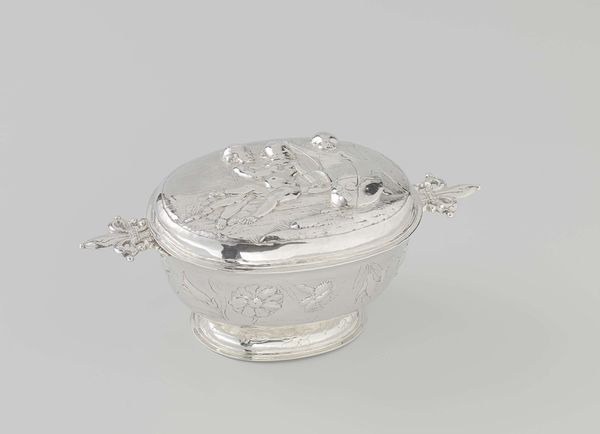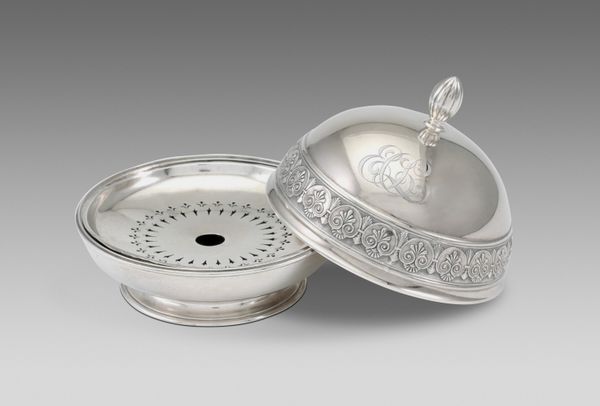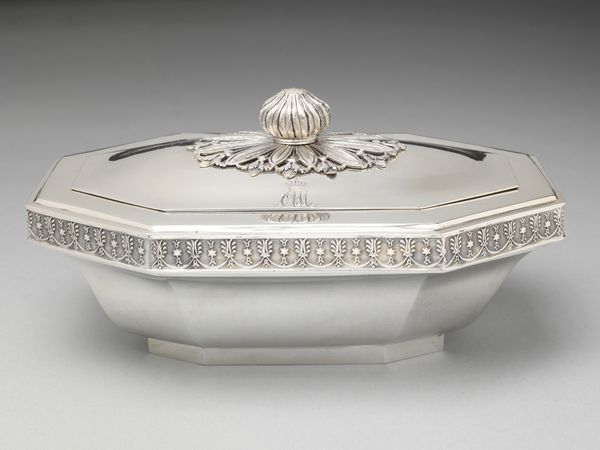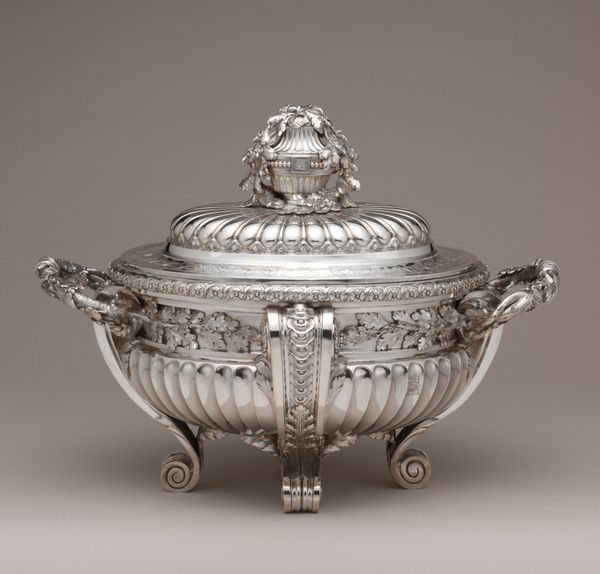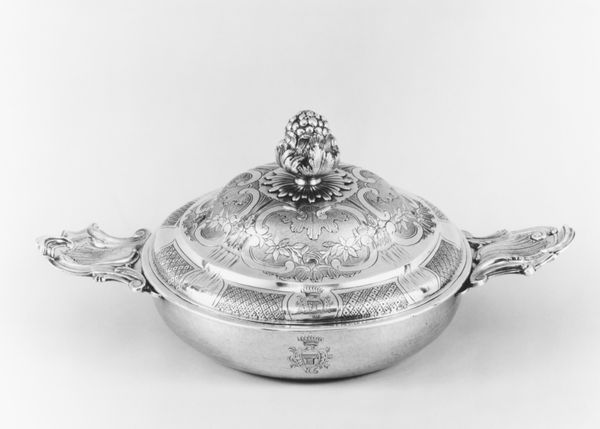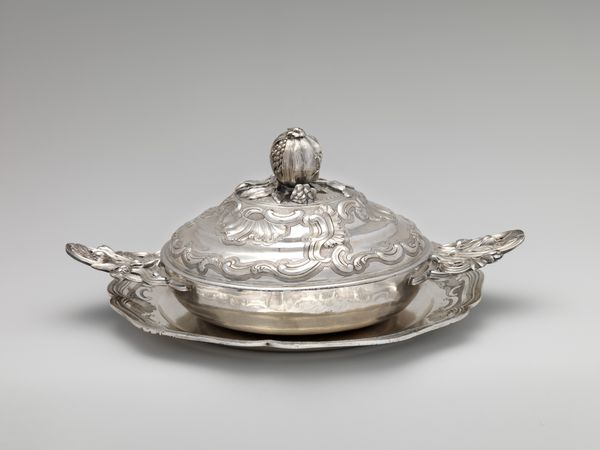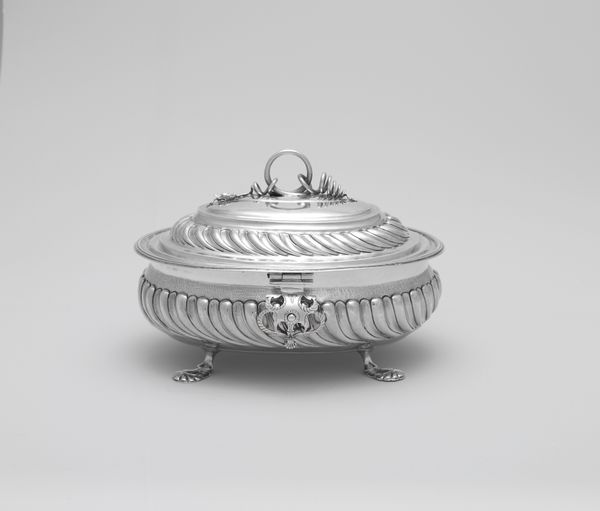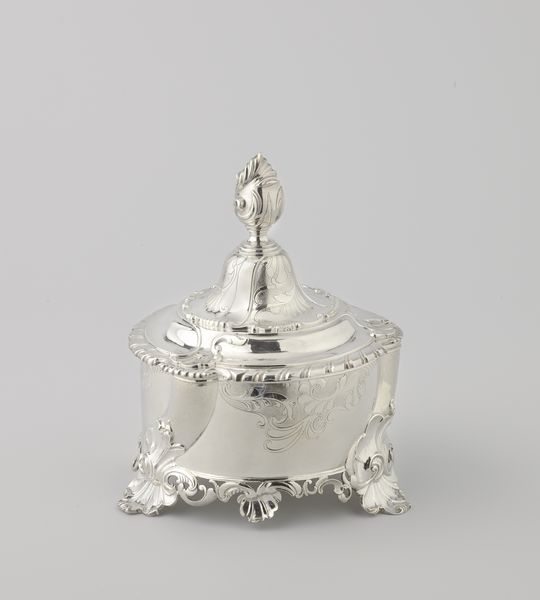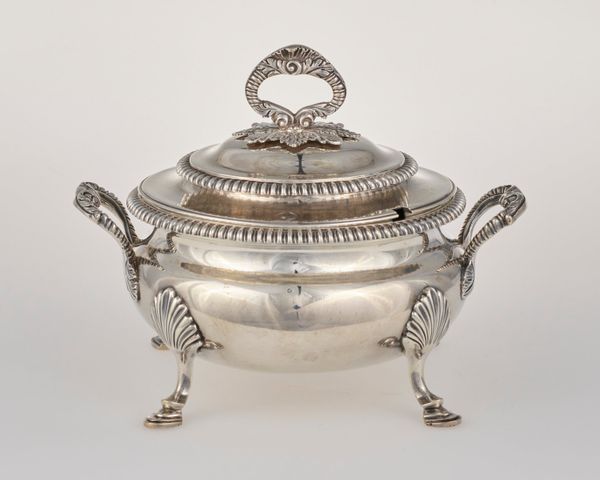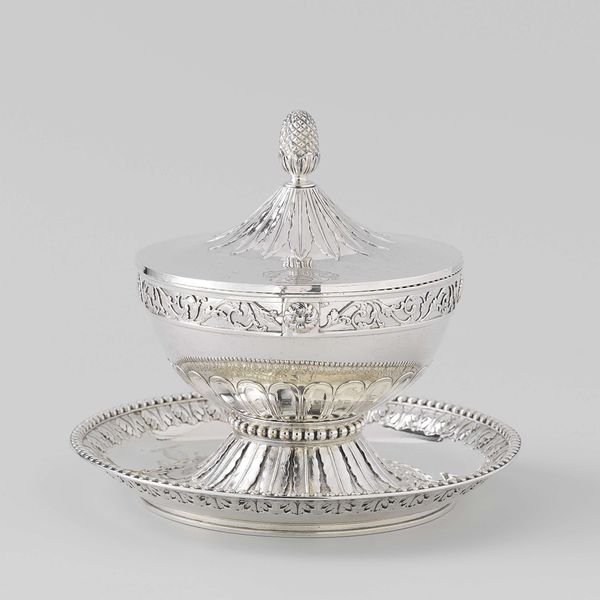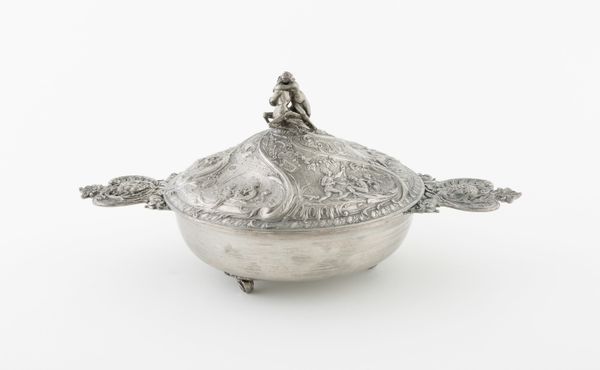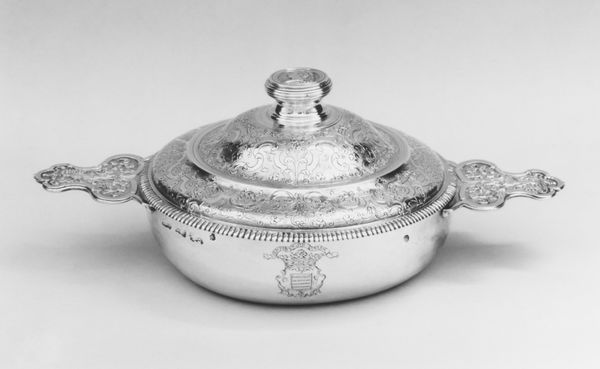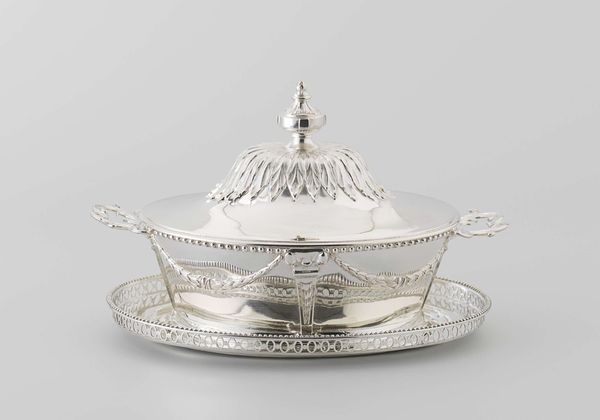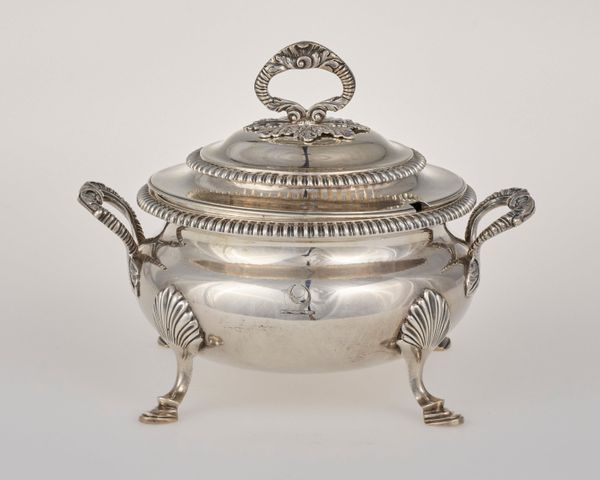
silver, metal
#
silver
#
metal
#
vessel
#
decorative-art
Dimensions: H.: 9.7 cm (3 3/4 in.)
Copyright: Public Domain
Editor: This is the "Porringer with Cover," crafted from silver and metal between 1851 and 1876, made by Henry Ball, William Black and Company. The ornate detailing really catches the eye. What's fascinating is the craftsmanship but also what this object tells us about wealth and status in the Victorian era. What do you see in this piece? Curator: Absolutely, that’s a great starting point. I see this porringer as more than just a vessel; it’s a cultural artifact. Consider the socio-economic context: owning such an intricately designed silver object signified a certain level of affluence and belonging to a specific social stratum. Who do you think would have owned something like this? What does that imply? Editor: Wealthy families, probably those keen to display their social standing? Curator: Exactly. Now, let’s think critically. Silver, like many luxury goods, carries with it a history of exploitation. Where did the silver come from? Who mined it? Understanding the labor and resources invested in this “decorative-art” object encourages reflection on unequal global power structures and how these imbalances manifest themselves through trade and colonialism. It demands that we engage critically with art history and connect historical privilege to contemporary inequalities. Editor: I hadn't considered it in that way before. The piece seems much more complex than it first appeared. Curator: Decorative arts are very complex. The piece prompts reflection on materiality and the stories it tells us, about industrial production and conspicuous consumption, but also social and ethical issues during the Victorian Era. Hopefully, that provides a new angle. Editor: Definitely, that has enriched my view. Thanks! Curator: My pleasure. Examining art through a critical lens makes for a much richer engagement with it.
Comments
No comments
Be the first to comment and join the conversation on the ultimate creative platform.
